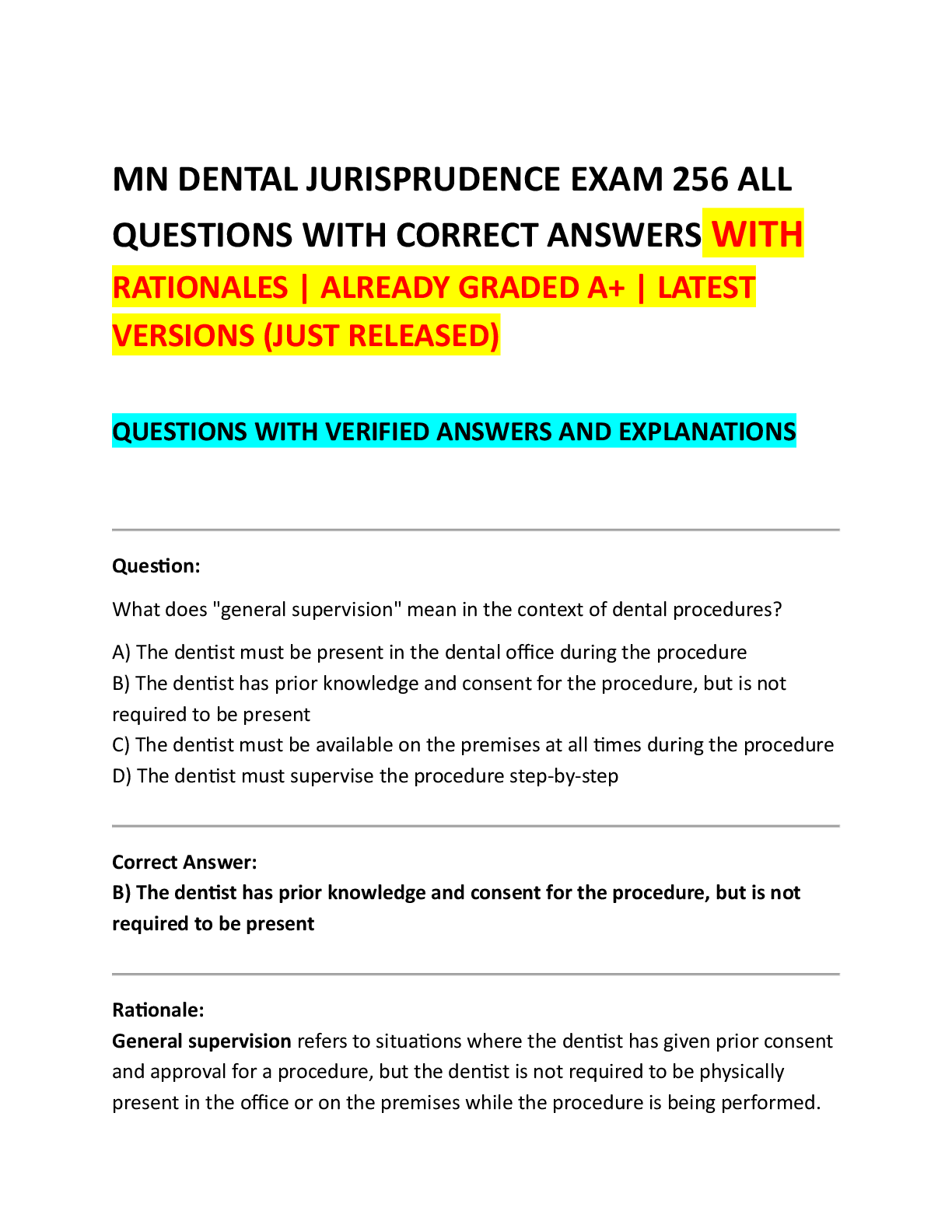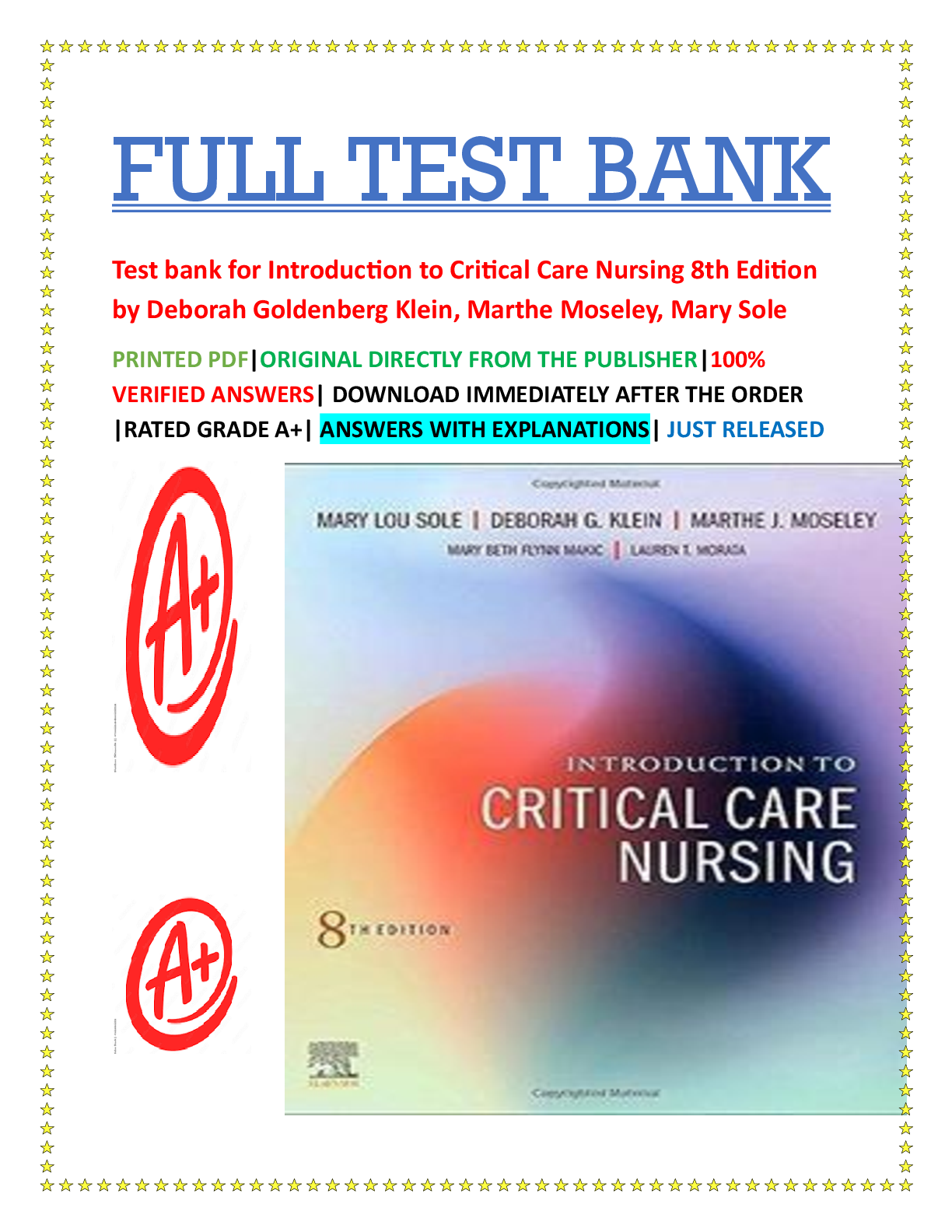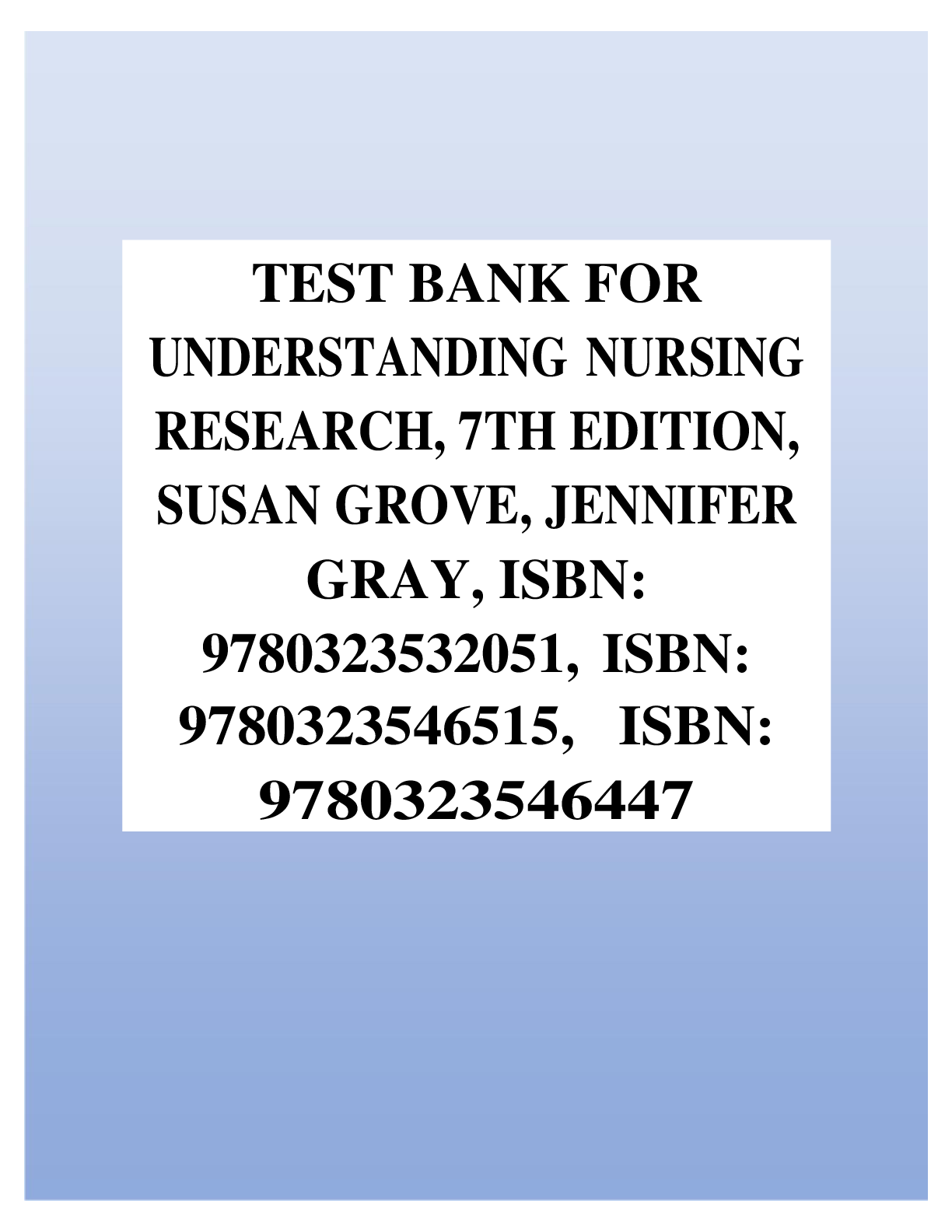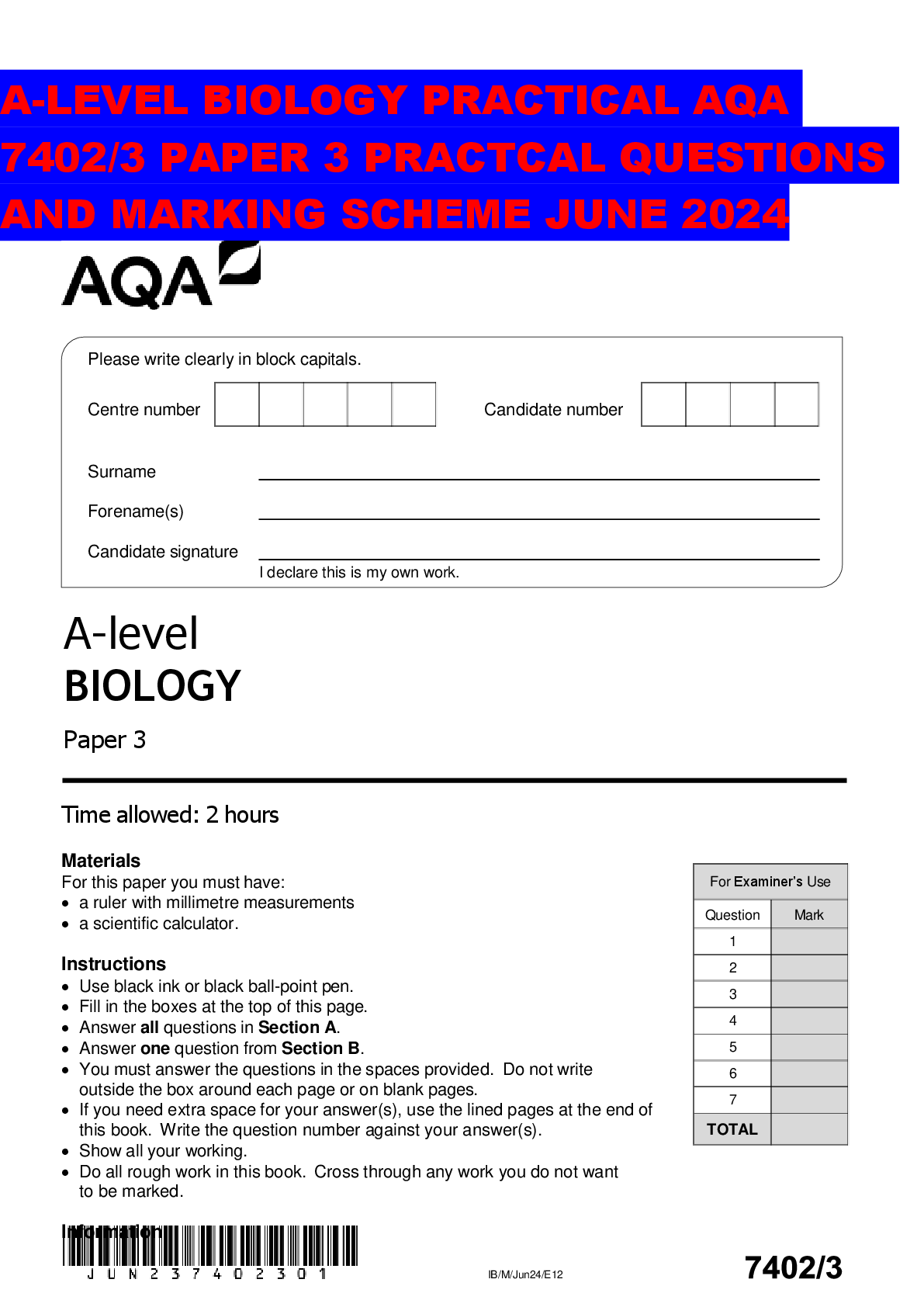AQA A-level PSYCHOLOGY 7182/2 Paper 2 Psychology in context Question Paper + Mark scheme [MERGED] June 2022 *JUN227182201* IB/G/Jun22/E8 7182/2 For Examiner’s Use Section Mark A B C TOTAL Time allowed: 2 hours Materials
Document Content and Description Below
AQA
A-level
PSYCHOLOGY
7182/2
Paper 2 Psychology in context
Question Paper + Mark scheme [MERGED]
June 2022
*JUN227182201*
IB/G/Jun22/E8 7182/2
For Examiner’s Use
Section Mark
A
B
C
TO
...
TAL
Time allowed: 2 hours
Materials
For this paper you may use:
• a calculator.
Instructions
• Use black ink or black ball-point pen.
• Fill in the boxes at the top of this page.
• Answer all questions. You must answer the questions in the spaces
provided. Do not write outside the box around each page or on
blank pages.
• If you need extra space for your answer(s), use the lined pages at the end
of this book. Write the question number against your answer(s).
• Do all rough work in this book. Cross through any work you do not
want to be marked.
Information
• The marks for questions are shown in brackets.
• The maximum mark for this paper is 96.
• Questions should be answered in continuous prose. You will be assessed on your ability to:
– use good English
– organise information clearly
– use specialist vocabulary where appropriate.
Please write clearly in block capitals.
Centre number Candidate number
Surname
Forename(s)
Candidate signature
I declare this is my own work.
A-level
PSYCHOLOGY
Paper 2 Psychology in context
2
*02*
IB/G/Jun22/7182/2
Do not write
outside the Section A box
Approaches in psychology
Answer all questions in this section.
0 1 Describe psychosexual stages as outlined in the psychodynamic approach.
[6 marks]
Extra space
3
*03*
Turn over ►
IB/G/Jun22/7182/2
Do not write
outside the
0 2 box At a local school, teachers took part in Active Lifestyle Week to encourage students to
become more active. The week involved daily staff netball matches during breaktimes and
a step count challenge.
Two of the teachers were talking at the end of the week. Miss Honey said, “That was such
a great week! I felt proud to win the staff step count challenge and receive the medal in
assembly and demonstrate the joy of sport. My students loved watching us compete, I
really think it will inspire them to be more active themselves!”
Mrs Wilson replied, “It’s alright for you, you’re young and the students like you. My
students were so embarrassed to see me tripping over in netball. I think I may have put
them off sport forever!”
Apart from mediational processes, use your knowledge of social learning theory to explain
Miss Honey’s and Mrs Wilson’s comments.
[6 marks]
Extra space
4
*04*
IB/G/Jun22/7182/2
Do not write
outside the
0 3 Whether or not students learn to be more active box could depend on mediational processes.
Explain how mediational processes might be involved in the students becoming more
active.
[4 marks]
0 4 Discuss self-actualisation and/or conditions of worth in explaining human behaviour.
[8 marks]
5
*05*
Turn over ►
IB/G/Jun22/7182/2
Do not write
outside the
box
Extra space
6
*06*
IB/G/Jun22/7182/2
Do not write
outside the
box
24
7
*07*
Turn over ►
IB/G/Jun22/7182/2
Do not write
outside the
box
Only one answer per question is allowed.
For each question completely fill in the circle alongside the appropriate answer.
CORRECT METHOD WRONG METHODS
If you want to change your answer you must cross out your original answer as shown.
If you wish to return to an answer previously crossed out, ring the answer you now wish to select
as shown.
0 5 Which of the following neurons carries electrical impulses towards the brain?
Shade one box only.
[1 mark]
A Interneuron
B Motor neuron
C Relay neuron
D Sensory neuron
0 6 Which one of the following is not a way of studying the brain?
Shade one box only.
[1 mark]
A Electrocardiogram (ECG)
B Electroencephalogram (EEG)
C Event-related potentials (ERPs)
D Functional magnetic resonance imaging (fMRI)
Section B
Biopsychology
Answer all questions in this section.
8
*08*
IB/G/Jun22/7182/2
Do not write
outside the
0 7 Describe the divisions of the nervous system box .
[6 marks]
Extra space
9
*09*
Turn over ►
IB/G/Jun22/7182/2
Do not write
outside the
0 8 Discuss localisation of function in the brai box n.
[16 marks]
You may use this space to plan your answer.
10
*10*
IB/G/Jun22/7182/2
Do not write
outside the
box
11
*11*
Turn over ►
IB/G/Jun22/7182/2
Do not write
outside the
box
Extra space
12
*12*
IB/G/Jun22/7182/2
Do not write
outside the
box
24
13
*13*
Turn over ►
IB/G/Jun22/7182/2
Do not write
outside the
Section C box
Research methods
Answer all questions in this section.
A controlled observation was designed to compare the social behaviours of pre-school
children of working parents and pre-school children of stay-at-home parents. The sample
consisted of 100 children aged three, who were observed separately. Half of the children
had working parents and the other half had stay-at-home parents.
The observation took place in a room which looked like a nursery, with a variety of toys
available. In the room, there were four children and one supervising adult. Their
behaviour was not recorded.
Each child participant was brought into the room and settled by their parent. The parent
then left to sit outside. Each child participant’s behaviour was observed covertly for five
minutes while they played in the room.
The observation was conducted in a controlled environment and a standardised script was
used when the children and their parents arrived.
0 9 Explain why the researcher used a controlled observation and a standardised script in this
study.
[4 marks]
1 0 Identify one limitation of controlled observations.
[1 mark]
14
*14*
IB/G/Jun22/7182/2
Do not write
outside the
The researcher used two trained observers to record the social behaviours of each child box
during the observation.
1 1 Give two behavioural categories that the observers could have used in the observation to
assess the pre-school children’s social behaviour. Explain why your chosen categories
are appropriate.
[4 marks]
1 2 Describe how the observers could use time sampling to record the social behaviour of
each child during the five-minute period.
[4 marks]
15
*15*
Turn over ►
IB/G/Jun22/7182/2
Do not write
outside the
1 3 box Explain one strength and one limitation of using time sampling for this observation.
[4 marks]
1 4 Explain how the reliability of the controlled observation could be assessed through
inter-observer reliability.
[4 marks]
Turn over for the next question
16
*16*
IB/G/Jun22/7182/2
Do not write
outside the
The data from the observation was summarised by converting the number of agreed box
observations into a total social behaviour score for each child.
The researcher then conducted a statistical test to identify whether there was a significant
difference between the social behaviour scores for the children of stay-at-home parents
and those of working parents.
1 5 Identify an appropriate statistical test that the researcher could use to analyse the social
behaviour scores in this study. Explain three reasons for your choice in the context of
this study.
[7 marks]
Extra space
17
*17*
Turn over ►
IB/G/Jun22/7182/2
Do not write
outside the
1 6 box Explain one reason why collecting quantitative data could reduce the validity of this study.
[2 marks]
The findings of this study might have implications for the economy.
1 7 Explain one or more possible implications of this study for the economy.
[3 marks]
This study was written up as a scientific report.
1 8 Describe features of the abstract section in a scientific report.
[3 marks]
Turn over for the next question
18
*18*
IB/G/Jun22/7182/2
Do not write
outside the
A new TV programme has been developed to increase positive social behaviours in box
pre-school children.
There is a proposal to carry out an experiment to compare the effects of the new TV
programme and an existing TV programme, on positive social behaviours in pre-school
children.
A sample of 500 pre-school children and their parents is available for the experiment. The
parents have given consent for their children to take part in this experiment.
The experiment will take place over an 8-week period. Data on the children’s social
behaviours will be gathered from the parents using a self-report method.
1 9 Design the experiment to investigate whether watching the new TV programme leads to an
increase in positive social behaviours in the children, compared with watching the existing
TV programme.
In your answer you will gain credit for providing appropriate details of the following:
• the type of experimental design, with justification
• a self-report method of data collection, with justification
• how to control one extraneous variable, with justification as to why this would need to be
controlled.
[12 marks]
You may use this space to plan your answer.
19
*19*
Turn over ►
IB/G/Jun22/7182/2
Do not write
outside the
box
20
*20*
IB/G/Jun22/7182/2
Do not write
outside the
box
Extra space
21
*21*
IB/G/Jun22/7182/2
Do not write
outside the
box
END OF QUESTIONS
48
22
*22*
IB/G/Jun22/7182/2
Do not write
outside the
There are no questions printed on this page box
DO NOT WRITE ON THIS PAGE
ANSWER IN THE SPACES PROVIDED
23
*23*
IB/G/Jun22/7182/2
Do not write
outside the
box Question
number
Additional page, if required.
Write the question numbers in the left-hand margin.
24
*24*
IB/G/Jun22/7182/2
Do not write
outside the
box Question
number
Additional page, if required.
Write the question numbers in the left-hand margin.
Copyright information
For confidentiality purposes, all acknowledgements of third-party copyright material are published in a separate booklet. This booklet
is published after each live examination series and is available for free download from www.aqa.org.uk.
Permission to reproduce all copyright material has been applied for. In some cases, efforts to contact copyright-holders may have
been unsuccessful and AQA will be happy to rectify any omissions of acknowledgements. If you have any queries please contact the
Copyright Team.
Copyright © 2022 AQA and its licensors. All rights reserved.
*226A7182/2*
A-level
PSYCHOLOGY
7182/2
Paper 2 Psychology in context
Mark scheme
June 2022
Version: 1.0 Final Mark Scheme
*226A7182/2/MS*
MARK SCHEME – A-LEVEL PSYCHOLOGY – 7182/2 – JUNE 2022
2
Mark schemes are prepared by the Lead Assessment Writer and considered, together with the relevant
questions, by a panel of subject teachers. This mark scheme includes any amendments made at the
standardisation events which all associates participate in and is the scheme which was used by them in
this examination. The standardisation process ensures that the mark scheme covers the students’
responses to questions and that every associate understands and applies it in the same correct way.
As preparation for standardisation each associate analyses a number of students’ scripts. Alternative
answers not already covered by the mark scheme are discussed and legislated for. If, after the
standardisation process, associates encounter unusual answers which have not been raised they are
required to refer these to the Lead Examiner.
It must be stressed that a mark scheme is a working document, in many cases further developed and
expanded on the basis of students’ reactions to a particular paper. Assumptions about future mark
schemes on the basis of one year’s document should be avoided; whilst the guiding principles of
assessment remain constant, details will change, depending on the content of a particular examination
paper.
Further copies of this mark scheme are available from aqa.org.uk
Copyright information
AQA retains the copyright on all its publications. However, registered schools/colleges for AQA are permitted to copy material from this booklet for their own
internal use, with the following important exception: AQA cannot give permission to schools/colleges to photocopy any material that is acknowledged to a third
party even for internal use within the centre.
Copyright © 2022 AQA and its licensors. All rights reserved.
MARK SCHEME – A-LEVEL PSYCHOLOGY – 7182/2 – JUNE 2022
3
Level of response marking instructions
Level of response mark schemes are broken down into levels, each of which has a descriptor. The
descriptor for the level shows the average performance for the level. There are marks in each level.
Before you apply the mark scheme to a student’s answer read through the answer and annotate it (as
instructed) to show the qualities that are being looked for. You can then apply the mark scheme.
Step 1 Determine a level
Start at the lowest level of the mark scheme and use it as a ladder to see whether the answer meets the
descriptor for that level. The descriptor for the level indicates the different qualities that might be seen in
the student’s answer for that level. If it meets the lowest level then go to the next one and decide if it
meets this level, and so on, until you have a match between the level descriptor and the answer. With
practice and familiarity, you will find that for better answers you will be able to quickly skip through the
lower levels of the mark scheme.
When assigning a level you should look at the overall quality of the answer and not look to pick holes in
small and specific parts of the answer where the student has not performed quite as well as the rest. If
the answer covers different aspects of different levels of the mark scheme you should use a best fit
approach for defining the level and then use the variability of the response to help decide the mark within
the level, ie if the response is predominantly level 3 with a small amount of level 4 material it would be
placed in level 3 but be awarded a mark near the top of the level because of the level 4 content.
Step 2 Determine a mark
Once you have assigned a level you need to decide on the mark. The descriptors on how to allocate
marks can help with this. The exemplar materials used during standardisation will help. Answers in the
standardising materials will correspond with the different levels of the mark scheme. These answers will
have been awarded a mark by the Lead Examiner. You can compare the student’s answer with the
standardised examples to determine if it is the same standard, better or worse than the example. You
can then use this to allocate a mark for the answ
[Show More]
Last updated: 2 years ago
Preview 1 out of 43 pages
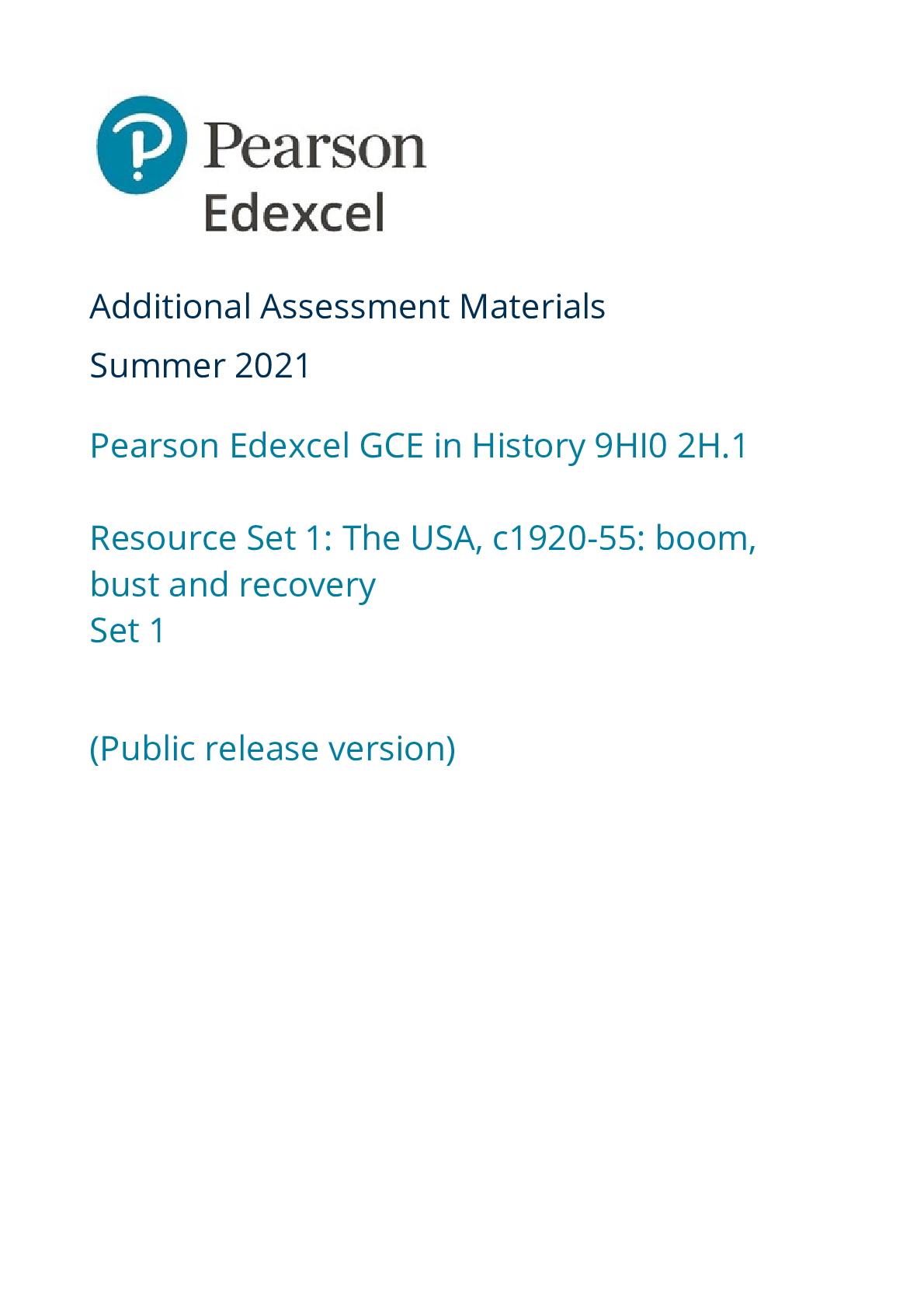

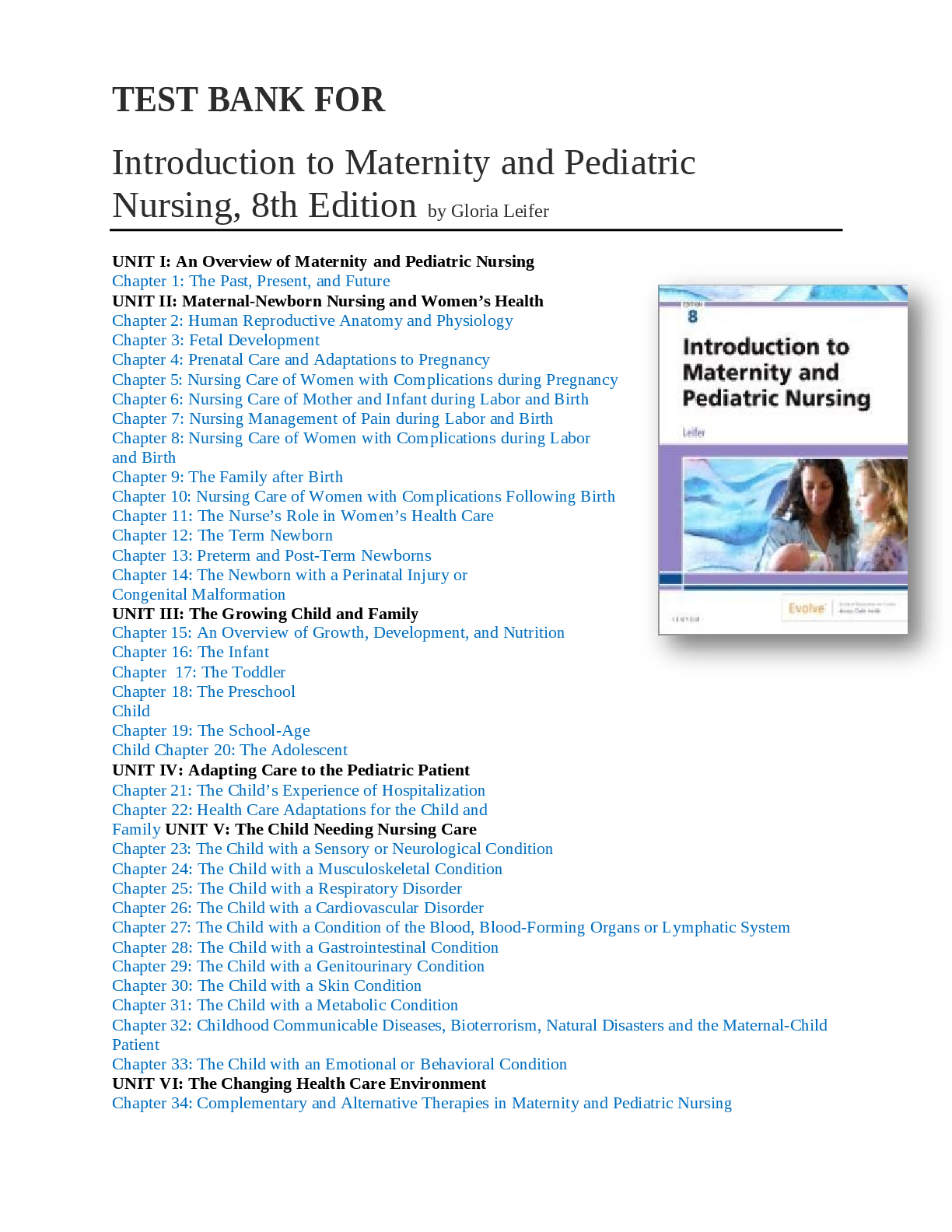

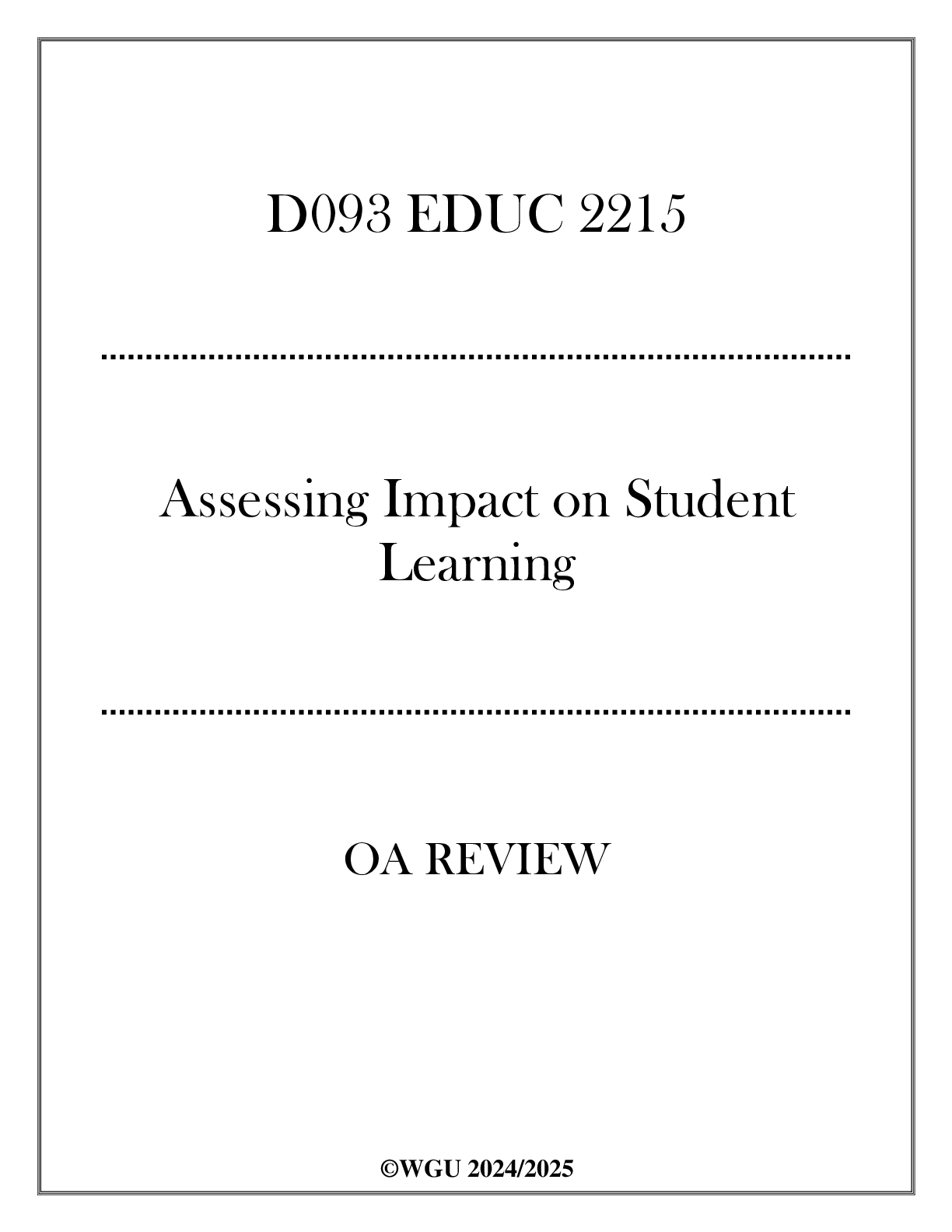
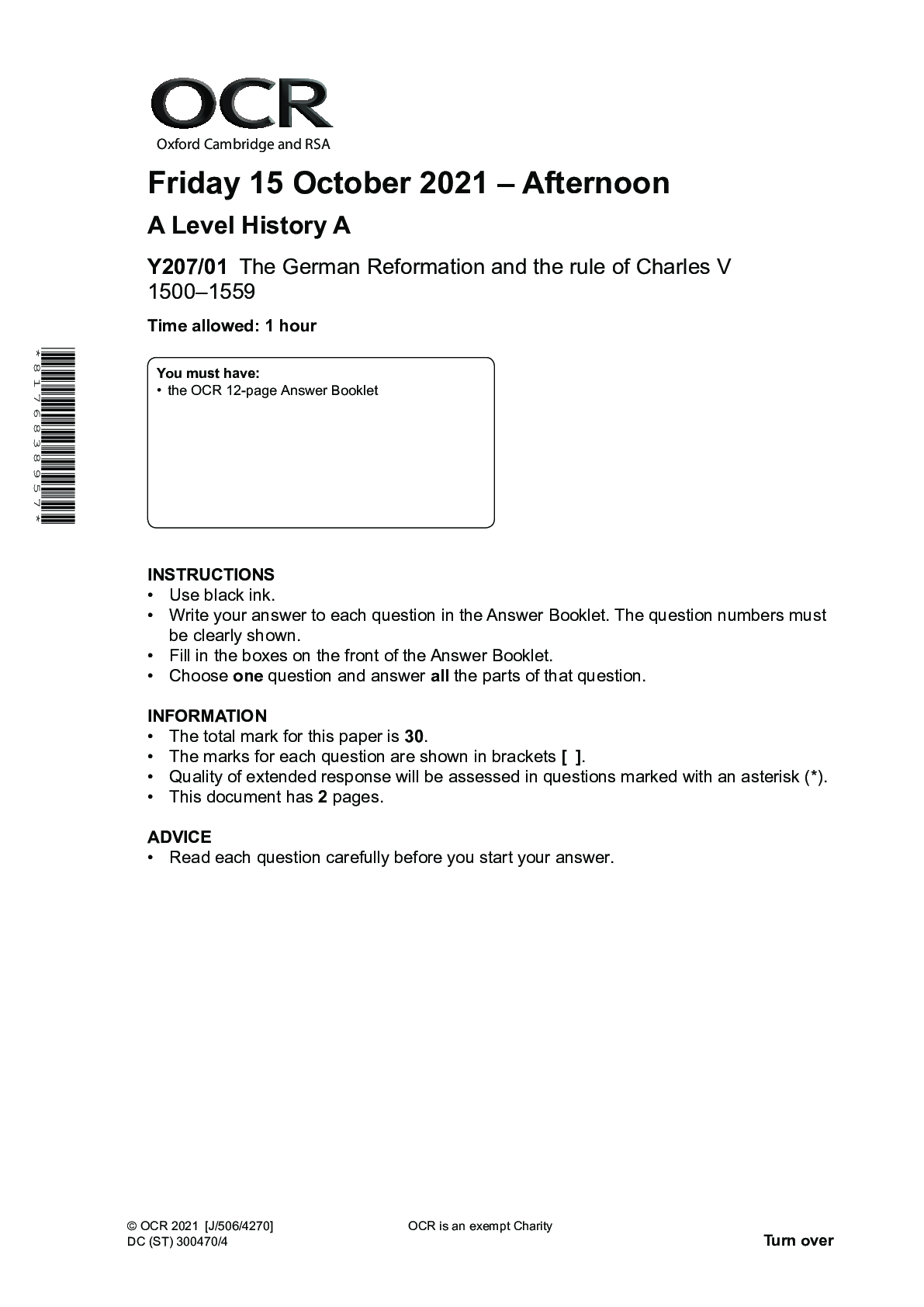
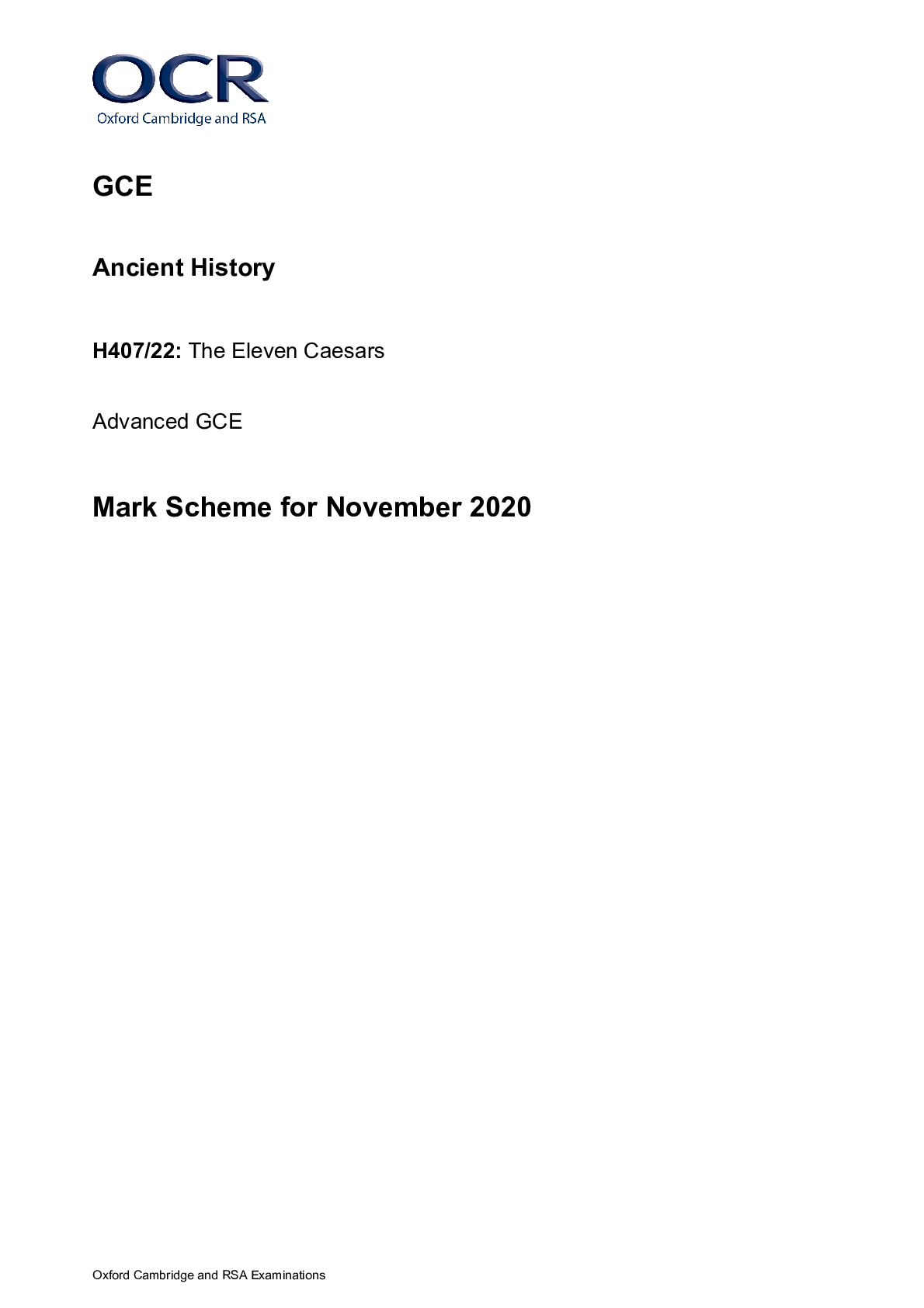

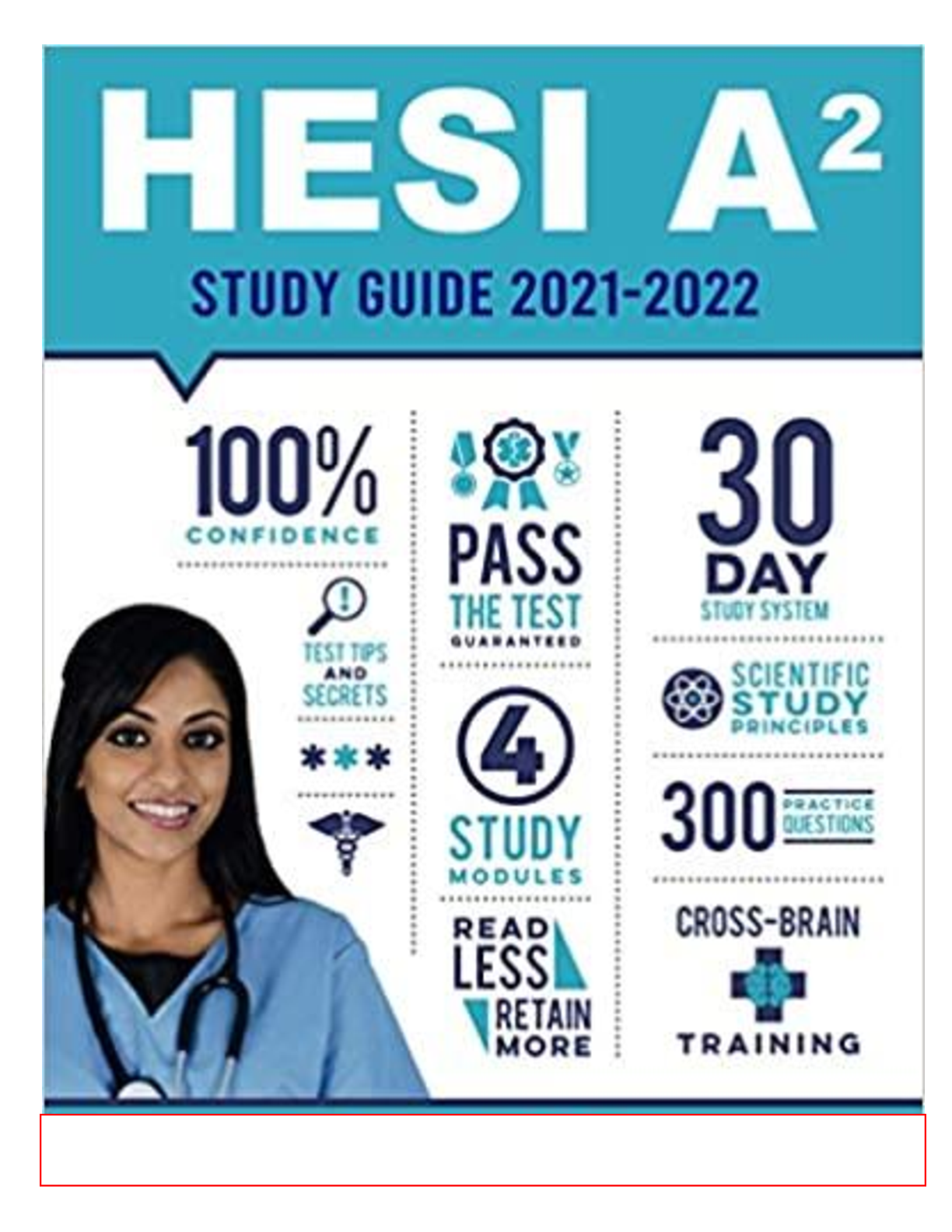

![Preview image of AQA A-level PSYCHOLOGY 7182/2 Paper 2 Psychology in context Question Paper + Mark scheme [MERGED] June 2022 *JUN227182201* IB/G/Jun22/E8 7182/2 For Examiner’s Use Section Mark A B C TOTAL Time allowed: 2 hours Materials document](https://browseimages.nyc3.digitaloceanspaces.com/paper-images/2023/Jun/03/bJUBjm0T2023-06-03-01-37647a6f1f5fffc.png)

.png)













